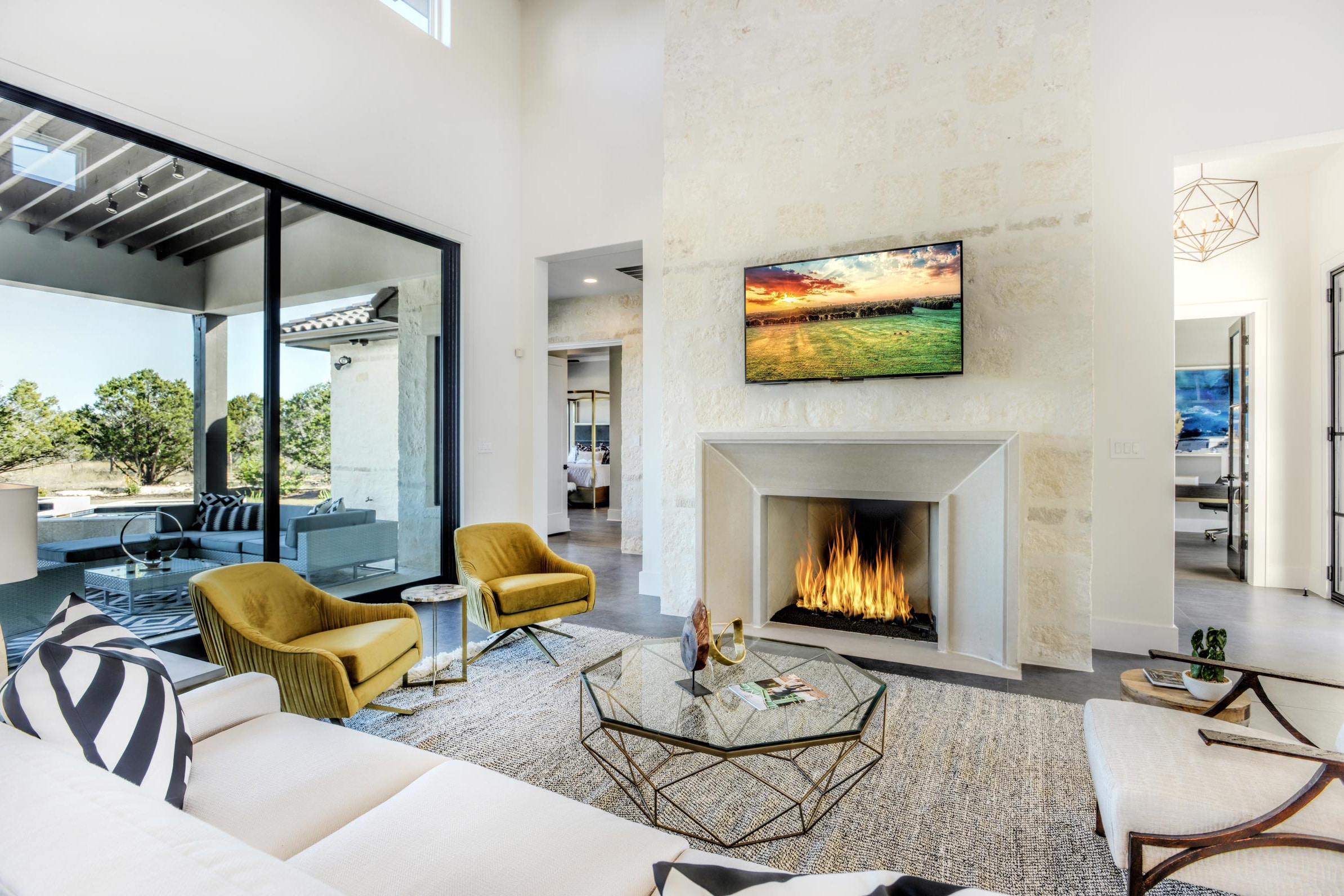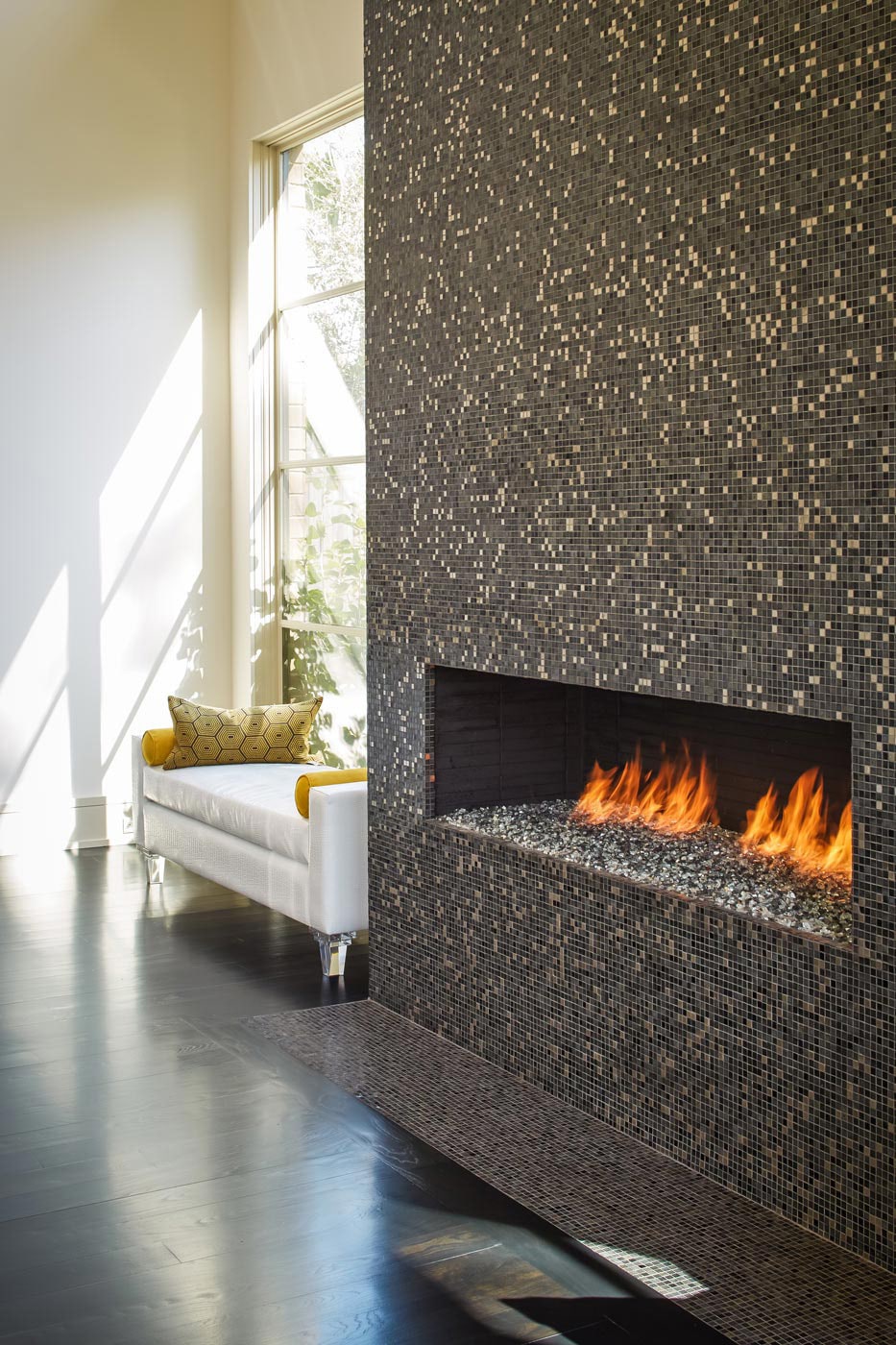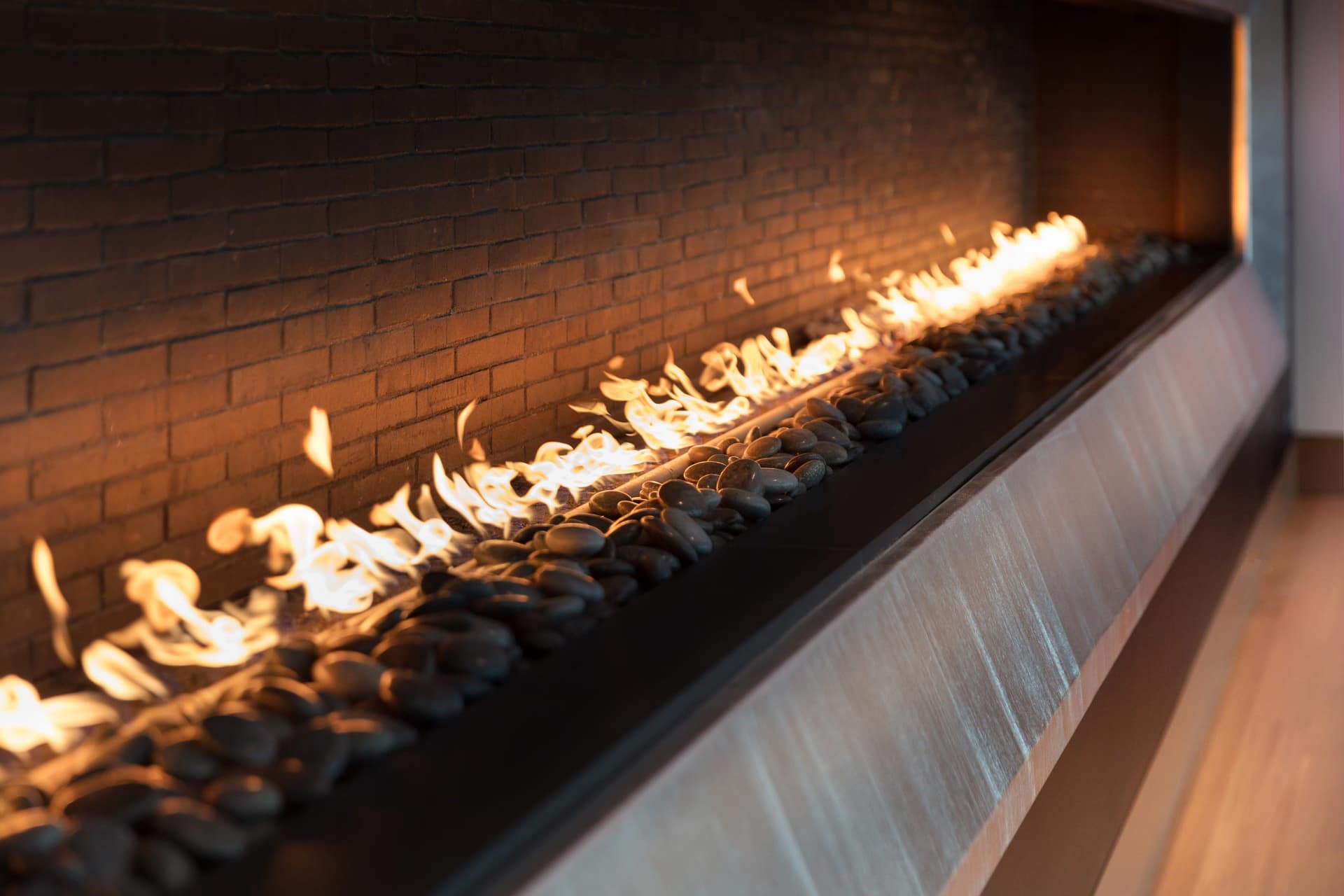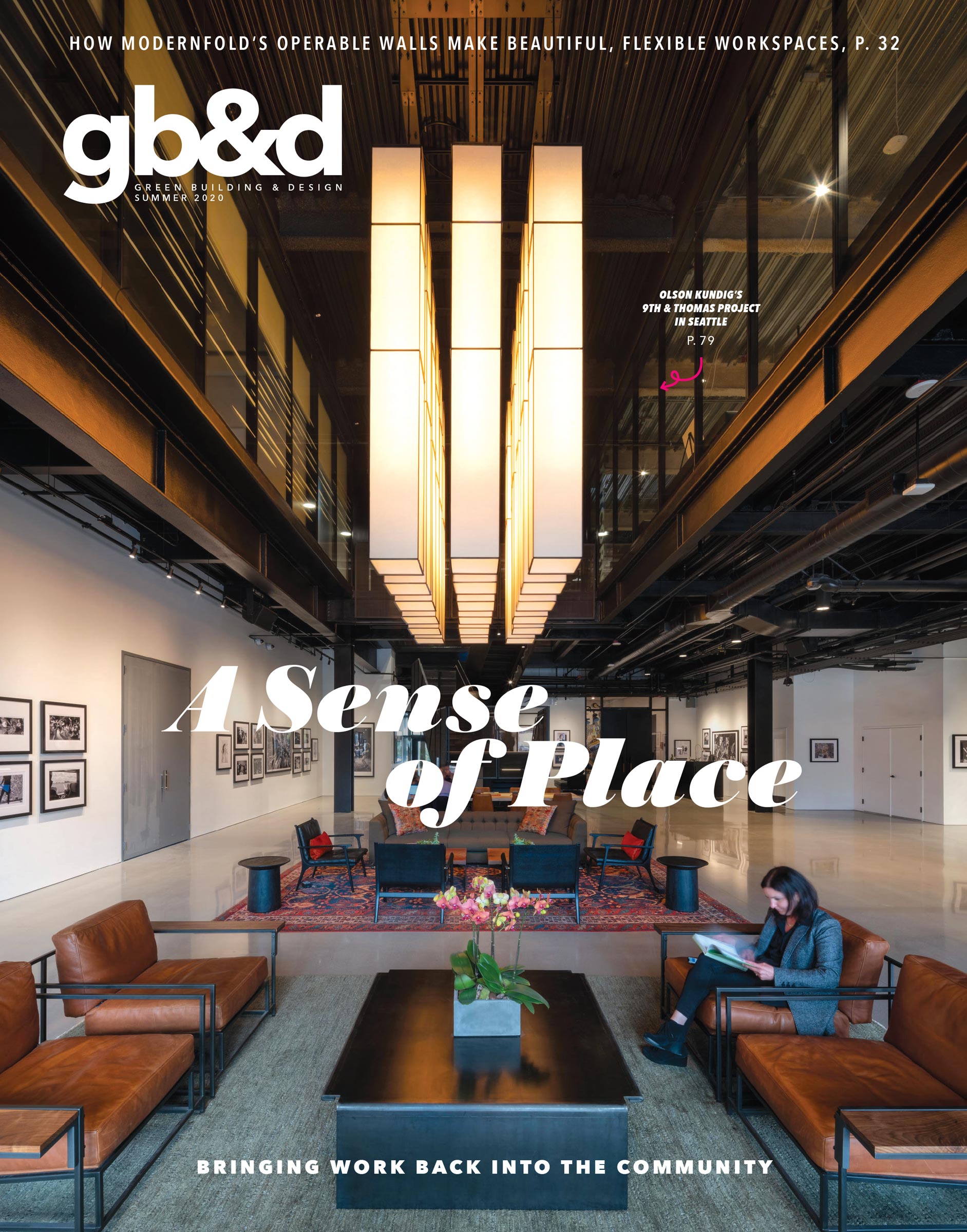
Earthcore can customize the fireplace of your dreams. The fireplace manufacturer uses Isokern pumice stone from Iceland in every project. Photo courtesy of Earthcore
Earthcore’s Maximus Linear Series offers customizable, clean fireplaces.
When Carl Spadaro, the founder and owner of Earthcore, took over Isokern’s U.S. office in Jacksonville, Florida, he looked at the landscape of materials being used in fireplaces across the country. He noticed that brick and metal dominated the market, which presented an opportunity for improvement. Brick-by-brick fireplaces absorb a lot of heat and are “dirty burners,” he says, because of the clay tile used in them. Metal fireplaces looked like file cabinets with the drawers missing. “Thirty years ago the linears weren’t around and the opportunity was to build a good masonry fireplace out of better material than metal or clay, and we were the only company to start that solution,” Spadaro says.
Earthcore was founded 30 years ago as a fireplace manufacturer using sustainable Isokern pumice stone from Iceland. With each new collection over the years, the company’s small engineering team has continued to offer the latest products to its customers without cutting on value or wasting material.
Customization and Modularization
The idea for the maximus linear series was formulated by a trend in the industry of long-linear fireplaces, according to Nicole Cartica, Earthcore’s marketing manager. She says many manufacturers are building metal-box style fireplaces that are cumbersome to put together and lack design options. The Earthcore team went to the table with the idea to craft a customizable linear fireplace unlike what had been done before. “That’s the great thing about Isokern. It’s very customizable,” she says. “We set out to take an idea and really build upon it and drive the market with the idea of customization.”
Spadaro says the beauty of his company’s approach to making linear fireplaces is that it modularizes things like gas delivery to the fireplace and breaks building down into lightweight pumice projects. “Two guys can install a 37-foot fireplace. You don’t need a whole crew or a crane to bring it in,“ he says. The largest fireplace Earthcore has built to record is a 37-foot fireplace in Houston for a wedding and event venue.

Other than offering customizable design, Earthcore is sustainable, too: The company has a less than 1% carbon footprint and uses nearly all of its materials during manufacturing. Photo courtesy of Earthcore
Cartica says the company likes to think of its product as Legos you build with onsite. Installation doesn’t require the manpower and resources of traditional metal-box unit fireplaces. Earthcore’s drive is to be inside of an architect’s plan, so it works directly with architects to develop products they want to use.
Customization is the top feature of the Maximus Linear series, as customers can zero in on the design of their fireplace and flawlessly match their interior designs. Spadaro says the fireplaces in the series don’t require a false wall to install or double glass on the opening, either—a subtle but notable sustainable feature.
Planet-Made Material
The 80-year-old Isokern technology for pumice started in Denmark, according to Spadaro. Isokern pumice accounts for 78% of the finished goods produced by Earthcore. The meaning of Isokern is broken down into two parts: “iso” meaning isolation and insulation, and “kern,” which stands for the volcanic soil used to insulate the fireplace. The aggregates, extracted from the Mt. Hekla volcano in Iceland, are clean and reusable.
Cartica says Earthcore has a less than 1% carbon footprint and uses nearly all of its materials during manufacturing. If something breaks, it can be recycled back into the proprietary mixture for the material.
The Icelandic pumice is about 6,000 years old, which Spadaro says is relatively young in comparison to the millions of years the rest of the world’s pumice has been around. It’s produced cleaner and cheaper than pumice from places like Greece, Italy, Hawaii, or Mexico, where it must be processed to remove organic material that finds its way into the soil. The Icelandic pumice used by Earthcore only needs to be screened.
The Isokern material allows the fireplace to heat up quickly and draft faster, too, Cartica says. Pumice is also strong and meant to withstand the test of time. “The house will crumble before an Isokern fireplace will,” Cartica laughs.

Balthazar Cellars is a 16,700-square-foot, stone-clad facility designed by architect Bill Curtis. The final build is a two-story wine storage facility with several second-floor entertaining venues, including this fire feature. Photo courtesy of Earthcore
More Benefits
Kevin Harrison, who worked as a draftsman on the company’s latest Maximus Linear series, notes the longevity of the fireplaces as a standout feature, along with being a green option and requiring minimal labor and cost to assemble. “We wanted to provide options without having to tear an entire fireplace out to make a visual change for our client,” Harrison says.
He was a part of Earthcore’s four-person engineering team that brought the company’s vision for the series to life. The series has two design styles of open front and cool-touch glass for the pit, and features a mix-and-match burner system, which allows the design to be updated without taking it out.
The Maximus Linear series also includes a combustion-cooling air system, which combines the two-step process into one to ensure the fireplace doesn’t get too hot or release carbon dioxide. Harrison notes that this will help ensure HVAC systems designed for the residence are not competing or making up for the fireplace.
Ernest Maranan, a product development and testing engineer on Earthcore’s engineering team, says the ability not to burn room air was also a focus in designing the series as some places, like California, are banning such fireplaces. “More and more cities are implementing the no-burning room-air policy for fireplaces, so we have to be ahead of the curve before it becomes mandatory,” he says.
Fireplaces in the series are also equipped with a safety feature that automatically shuts it off if there is no airflow or if kept on too long.
Following the Maximus Linear series, Earthcore embarked on a new project for fireproof rooms lined with Isokern pumice to store valuable belongings in the event of a fire. Spadaro hopes to launch the product in 2021, and says he’s excited to see what the future may hold. “That’s what excites me about the pumice—what are the things we can do to bring to market, because there’s millions of years of this material left,” he says.


